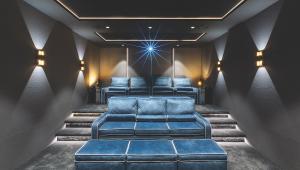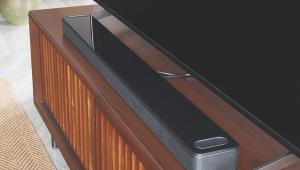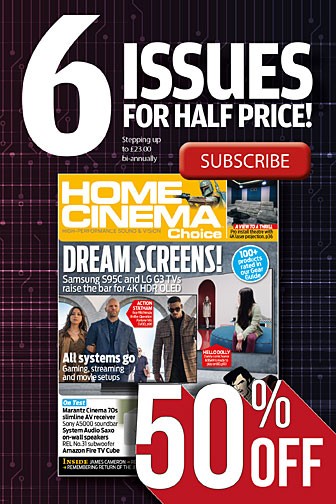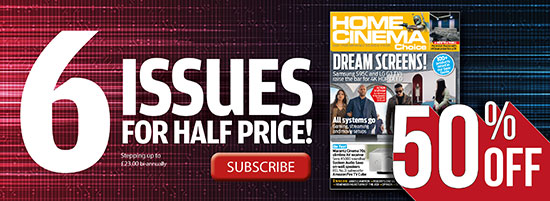Philips Screeneo 2.0 review
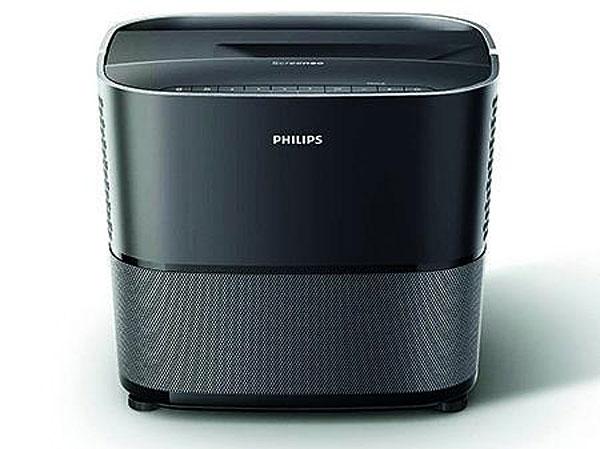

The basic idea remains unchanged, of course – what we have here is designed as a portable display system that can be deployed anywhere around the house. Philips wants you to use it for movie nights or sporting get-togethers, gaming sessions or kids' Pixar parties. If you can rig up a screen and provide power, you could even watch al fresco on a balmy Summer night.
Unlike everyday home theatre light cannons, an ultra short-throw projector needs only to be close to a wall to cast a humongous image. So there are no worries about walking in front of the beam, or wrestling with a suitable location. Floor or furniture will do fine.
The Screeneo 2 (also known as the HDP2510) flaunts an unusual yet practical design. It looks not unlike a portable sound system and comes with a substantial carry handle, stands tall at 385mm and weighs a hefty 8.3kg. The lens fires upwards, while on-body controls ape those found on a boom box. For lugging it around, there's a cool-bag-style carry case.
A different beastAs well as the cosmetic differences between the Screeneo 2 and its predecessor (which used a squatter form factor), there's a key tech upgrade here – this model fires images with a Full HD resolution, instead of 1,280 x 800. Obviously, this makes it more of a potential purchase for Blu-ray fans.
Connectivity has changed considerably, too. Once again there are three HDMI inputs (two on the rear, one on the side behind a little flap, next to a 3.5mm headphone jack), plus composite video with stereo phonos and a VGA PC input. There's also an optical audio output if you want to partner it with separate audio gear, plus the Screeneo 2 is Bluetooth-enabled, should you want to take advantage of its onboard speakers to stream tracks (not that this should be considered a hi-fi product). A 12V trigger means you could also integrate Philips' projector into an automated cinema system. But gone from the spec list, though, are the media-playing USB inputs, SD card slot, DVB-T tuner and Wi-Fi connection. The original Screeneo was a smart cookie, this model isn't.
Obviously, the size of image projected by the Screeneo 2 is dictated by how much wall space you have available. I was able to fill the width of an entire wall (3.5m to be precise); naturally, the image grows as you walk the projector further away from the surface. The throw ratio is 0.21:1. The unit is 3D ready (and offers a 2D-3D conversion mode) but isn’t bundled with any glasses.
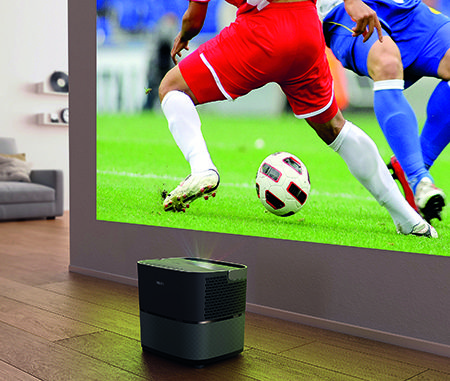 High-impact home entertainment
High-impact home entertainment
It pays not to compare the Screeneo 2's performance to a dedicated home theatre projector/screen combo. That’s not really the point of the product category. This is all about no-fuss, high-impact entertainment. That said, it puts in a good showing.
The projector uses a DLP picture engine with a six-segment (RGBRGB) colour wheel. I tend to be susceptible to rainbow fringing, so was pleased that here it wasn't an issue. Illumination is via a UHP lamp, which contributes a maximum brightness of 2,000 Lumens. Philips quotes a healthy lamp life of 10,000 hours, although the previous Screeneo, which used an LED light source, claimed a lifespan three times greater.
For setup and general operation, you get a (very directional) IR remote control that offers adjustable focus. The trick is to try and maintain clarity at the edge of the picture, as this is usually the first place to fuzz-up on an ultra short-throw projector. Thankfully, the Screeneo 2 actually does a good job maintaining clarity across the frame.
Adjustable image parameters comprise Brightness, Contrast, Colour saturation and Sharpness. The lamp brightness has three modes, too: Primetime, Cinema and Daylight. The latter cranks up the lamp to full output, but increases fan noise as a result.
The Screeneo 2 boasts powerful picture processing, dubbed Flow Motion, for superior motion handling. When engaged, it retains image detail up to 1080 lines, but adds motion artefacts in addition to that characteristic soap opera sheen. While perhaps fine for sport, this doesn't look particularly cinematic. For Blu-ray viewing, I definitely preferred Flow Motion off. Here, subjective motion resolution dips to around 650 lines, but the picture becomes much more filmic.
Most buyers will use the Screeneo 2 with a white wall, but not everyone has perfect plaster to hand. So there's wall compensation to optimise the image for white, beige, green and grey paint jobs.
The projector is certainly bright enough for use in moderate ambient light, although you'll really want a darkened room environment for the best contrast (Philips claims it has a ratio of 200,000:1) and colour vibrancy. And regardless of how much you tweak the image, it never manages to achieve a solid deep black. On the other hand, The SpongeBob Movie: Sponge Out of Water (Sky Cinema), which is brightly-hued eye candy, looked great, with crisp details and plenty of pop.
While imagery is fine if not fabulous, sonically the package is a quantum leap over the kind of weedy 1W sound systems usually built into projectors. The onboard speaker setup features an integrated subwoofer, with total power output (optimistically) rated at 26W, and there’s certainly enough grunt available to entertain without recourse to additional speakers. Iron Maiden's Fear of the Dark, from Flight 666 (Blu-ray), is gutsy enough not to be a metalhead embarrassment.
The soundstage is inevitably narrow though. In the menu you’ll find a Wide Sound mode, but this amplifies treble in a harsh and unpleasant way. There's also a bunch of EQ presets, but they don't offer any significant variety. And my review sample often emitted an ugly pop when turned on or negotiating a signal via HDMI, which was a bit annoying.
Better by designThe Screeneo 2.0 is a lot of fun. Not everyone has the space for a dedicated home cinema projector; this portable model is supremely easy to accommodate, and it allows bigscreen viewing in a multiplicity of rooms (size isn’t a problem). The unusual form factor, with decent integrated sound, also gives it an edge over more conventional competition like the (admittedly £500 cheaper) Optoma GT5000. And while some may miss the extra features of its forebear, I prefer the improved visuals.
Specification
3D: Yes. DLP Active Shutter (no glasses supplied) 4K: No. 1,920 x 1,080 Full HD Connections: 3 x HDMI inputs; composite video; stereo audio input; PC VGA input; 12V trigger output; optical digital audio input; headphone output Brightness (claimed): 2,000 Lumens Contrast ratio (claimed): 200,000:1 Dimensions: 315.5(w) x 281.9(h) x 248.8(d)mm Weight: 8.3kg
Features: DLP single-chip projector with six-segment colour wheel; Bluetooth streaming; onboard 2.1 sound system (rated at 26W); 10,000-hour claimed lamp life; 250W Philips UHP Image Life lamp; Flow Motion image interpolation; wall colour correction; 0.21:1 throw ratio; Primetime, Cinema and Daylight modes; 25dB claimed fan noise in cinema mode; 2D-3D conversion
 |
Home Cinema Choice #351 is on sale now, featuring: Samsung S95D flagship OLED TV; Ascendo loudspeakers; Pioneer VSA-LX805 AV receiver; UST projector roundup; 2024’s summer movies; Conan 4K; and more
|




























